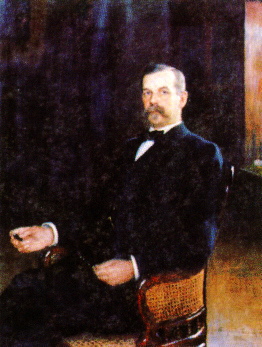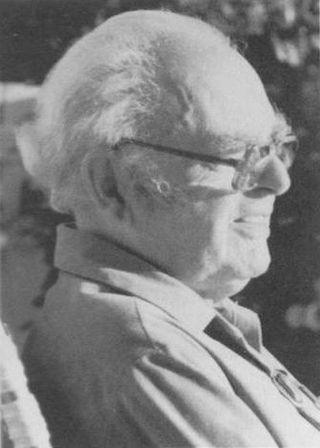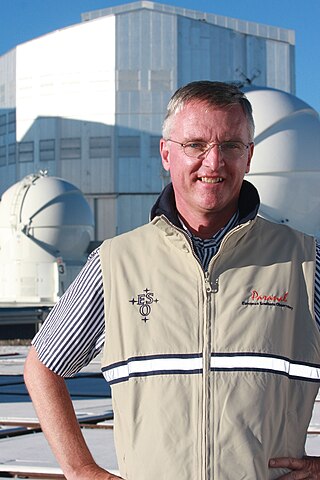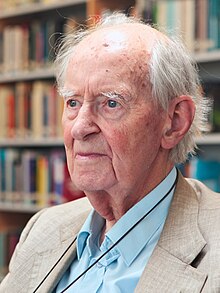
Ejnar Hertzsprung was a Danish chemist and astronomer.

Henry Norris Russell ForMemRS HFRSE FRAS was an American astronomer who, along with Ejnar Hertzsprung, developed the Hertzsprung–Russell diagram (1910). Russel is generally credited for discovering that stars are made primarily of Hydrogen, disproving the previous prevailing view about the composition of stars. However, this discovery was actually first observed and presented by Cecilia Payne in her 1925 doctoral thesis, the findings of which Russel had initially rejected before subsequently concluding that she was right four years later. In 1923, working with Frederick Saunders, he developed Russell–Saunders coupling, which is also known as LS coupling.

Prof Jacobus Cornelius Kapteyn FRS FRSE LLD was a Dutch astronomer. He carried out extensive studies of the Milky Way and was the discoverer of evidence for galactic rotation. Kapteyn was also among the first to suggest the existence of dark matter using stellar velocities as early as 1922.

Lyman Spitzer Jr. was an American theoretical physicist, astronomer and mountaineer. As a scientist, he carried out research into star formation, plasma physics, and in 1946, conceived the idea of telescopes operating in outer space. Spitzer invented the stellarator plasma device and is the namesake of NASA's Spitzer Space Telescope. As a mountaineer, he made the first ascent of Mount Thor, with Donald C. Morton.

Jan Hendrik Oort was a Dutch astronomer who made significant contributions to the understanding of the Milky Way and who was a pioneer in the field of radio astronomy. The New York Times called him "one of the century's foremost explorers of the universe"; the European Space Agency website describes him as "one of the greatest astronomers of the 20th century" and states that he "revolutionised astronomy through his ground-breaking discoveries." In 1955, Oort's name appeared in Life magazine's list of the 100 most famous living people. He has been described as "putting the Netherlands in the forefront of postwar astronomy."

Willem de Sitter was a Dutch mathematician, physicist, and astronomer.

Johan Oskar Backlund was a Swedish-Russian astronomer. His name is sometimes given as Jöns Oskar Backlund, however even contemporary Swedish sources give "Johan". In Russia, where he spent his entire career, he is known as Oskar Andreevich Baklund. Russian sources sometimes give his dates of birth and death as 16 April 1846 and 16 August 1916, since Russia still used the Julian calendar at the time.

Bartholomeus Jan "Bart" Bok was a Dutch-American astronomer, teacher, and lecturer. He is best known for his work on the structure and evolution of the Milky Way galaxy, and for the discovery of Bok globules, which are small, densely dark clouds of interstellar gas and dust that can be seen silhouetted against brighter backgrounds. Bok suggested that these globules may be in the process of contracting, before forming into stars.

Maarten Schmidt was a Dutch-born American astronomer who first measured the distances of quasars. He was the first astronomer to identify a quasar, and so was pictured on the March cover of Time magazine in 1966.

Hendricus Gerardus van de Sande Bakhuyzen was a Dutch astronomer. His surname, van de Sande Bakhuyzen, is sometimes erroneously given as Backhuyzen or Bakhuysen. His first name is sometimes given as Hendrik Gerard. Not to be confused with his father, the animal painter Hendrik van de Sande Bakhuyzen (1795–1860).

Kenneth Charles Freeman is an Australian astronomer and astrophysicist who is currently Duffield Professor of Astronomy in the Research School of Astronomy and Astrophysics at the Mount Stromlo Observatory of the Australian National University in Canberra. He was born in Perth, Western Australia in 1940, studied mathematics and physics at the University of Western Australia, and graduated with first class honours in applied mathematics in 1962. He then went to Cambridge University for postgraduate work in theoretical astrophysics with Leon Mestel and Donald Lynden-Bell, and completed his doctorate in 1965. Following a postdoctoral appointment at the University of Texas with Gérard de Vaucouleurs, and a research fellowship at Trinity College, Cambridge, he returned to Australia in 1967 as a Queen Elizabeth Fellow at Mount Stromlo. Apart from a year in the Kapteyn Institute in Groningen in 1976 and some occasional absences overseas, he has been at Mount Stromlo ever since.
2145 Blaauw, provisional designation 1976 UF, is a dark Ursula asteroid from the outer regions of the asteroid belt, approximately 38 kilometers in diameter. It was discovered on 24 October 1976, by astronomer Richard Martin West at the La Silla Observatory in northern Chile. The asteroid was named after Dutch astronomer Adriaan Blaauw.

Astronomy & Astrophysics is a monthly peer-reviewed scientific journal covering theoretical, observational, and instrumental astronomy and astrophysics. The journal is run by a board of directors representing 27 sponsoring countries plus a representative of the European Southern Observatory. The journal is published by EDP Sciences and the editor-in-chief is Thierry Forveille.

Pieter Timotheus "Tim" de Zeeuw is a Dutch astronomer specializing in the formation, structure and dynamics of galaxies. From 2007 to 2017 he was the director general of European Southern Observatory. He is married to astronomer Ewine van Dishoeck. In May 2022, Leiden University suspended him after an internal review concluded that over several years he repeatedly belittled and insulted women in public and abused his position of power as a professor by threatening to damage their scientific careers; and that in addition to intimidation and inappropriate behavior there was "a component of sexual harassment". The Max Planck Institute for Extraterrestrial Physics announced that they will no longer work with him and the European Southern Observatory banned him from accessing their premises.
Blaauw is a Dutch surname. It is an archaic spelling of modern Dutch blauw, meaning blue. This may have referred to the pale skin, the eyes, or the clothes of the original bearer of the name or the surname may be metonymic, e.g. referring to a dyer or someone who produced bluing in a mill. People with this name include:
Tjeerd Sicco van Albada is a Dutch astronomer and emeritus professor of Astronomy at the University of Groningen.
George Kildare Miley is an Irish-Dutch astronomer. He holds a professorship at Leiden University, where he served as director of Leiden Observatory from 1996 to 2003.
Adriaan Jan Wesselink (1909–1995) was a Dutch astronomer who worked successively in the Netherlands, South Africa and the United States. He specialised in observing and understanding the characteristics of stars, particularly variable stars.

Jan Borgman was a Dutch astronomer and university administrator. He was professor of astronomical observation technique at the University of Groningen from 1968 to 1988. During this period he served as rector magnificus from 1978 to 1981 and chair of the board of governors from 1981 to 1988. Borgman subsequently became chairperson of the Netherlands Organisation for Scientific Research.

Stuart Pottasch was a professor at the University of Groningen and a researcher of planetary nebulae.















